Huelva
By spring 1943, US and Great Britain had driven the Germans and Italians out of North Africa and were now aiming for Europe. Sicily was the natural springboard to southern Europe and the Germans were well aware of that and had strengthened the defense of Sicily. For the allies under the leadership of the American general, Dwight D. Eisenhower, it was important to make the Germans believe that a landing was to be expected elsewhere than Sicily. Already in the autumn and winter of 1942, the British intelligence service, MI6, had discussed how to decept the Germans that an invasion would take place elsewhere than Sicily.
About that time, British intelligence officers, Ewen Montagu and Charles Cholmondeley, came up with a plan to plant a dead body with false information in the hands of the Germans. The important thing was that the body was planted where it was likely that the information reached the German military intelligence service, Abwehr. It could not be too obvious, but had to be realistic. But first Montagu and Cholmondeley had to find a suitable body without relatives or anyone else claiming the body. By the end of January 1943, a pathologist in London had found a suitable body for the purpose. Glyndwr Michael, a homeless 34-year-old Welshman who had died after eating rat poison.
Now it was important to give the dead person both a name and a career. Michael was given a fictional name and a major’s degree, William Martin, a British naval officer who during a fictional flight from Africa to Britain plunged into the sea off the Spanish coast. Montgau and Cholmondeley wrote a credible life story about Martin because they knew that the Germans would check the identity of the dead person, both privately and professionally, and not least visually. Montgau and Cholmondeley also knew that the information William Martin carried was of the nature that the Germans would scrutinize him more carefully than normal.
In mid-April 1943, the body was transported by truck to Scotland and on board the British submarine Seraph. The submarine set course for Spain and at the end of April the body was unloaded in the sea off Huelva on the Spanish south coast. Here the currents would bring the body to land. The captain of the submarine then informed the British admiralty that Operation Mincemeat was underway. Already on the same day, Martin was found by Spanish fishermen who turned the body to Spanish authorities. The finding was followed by intensive communication between various authorities in the coming days, given the information that the body carried.
Through German spies in Spain, the germans immediately became aware of the find, which was completely according to plan from the British side. The British also understood that neutral Spain would give the Germans access to the body, even that according to plan. From the German side it was important to give the impression that they had not been in contact with the body, and therefore no knowledge of the information the body carried. When the Germans were done with the body, it was returned to the Spaniards who returned the briefcase with the information to England. When the briefcase and the false documents were examined, the British found that they had been investigated by the Germans despite attempts to conceal this. This could also be confirmed by interception and decryption of communications between the Germans. From the British side, one could only hope that the Germans had swallowed the bait. William Martin had already on May 1st been quickly autopsied and buried on May 4 with full military honors at Nuestra Senora de la Soledad cemetery, about four kilometers northeast of Huelva.
The main purpose of the information Martin carried was that it would give the impression that an allied invasion was to happen on Sardinia and not Sicily. The Germans therefore began to move troops from Sicily to Sardinia, and also to Greece if Sardinia turned out to be a sidetrack. When the allies invaded Sicily in July 1943, the defense was substandard and the entire island could therefore be liberated in just over a month. The British were therefore convinced that Operation Mincemeat was a success. But it may also have been that conspirators (opponents of Hitler) within Abwehr passed on the false information fully aware that it was false and thus accelerated the German the defeat.
Current status: Preserved with information board (2024).
Location: 37°17'26.45"N 06°55'53.53"W
Get there: Car.
Follow up in books: Macintyre, Ben: Operation Mincemeat (2010).

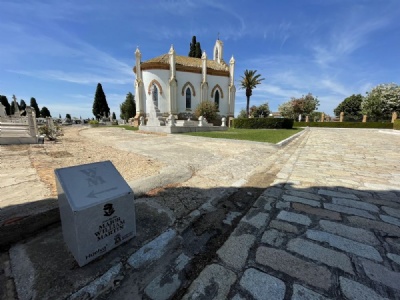
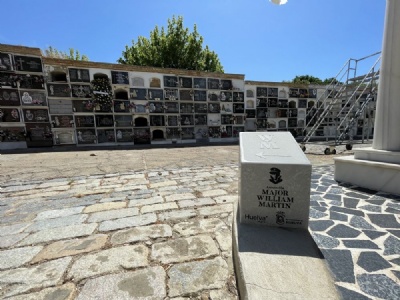
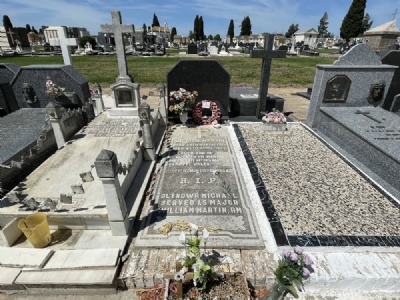
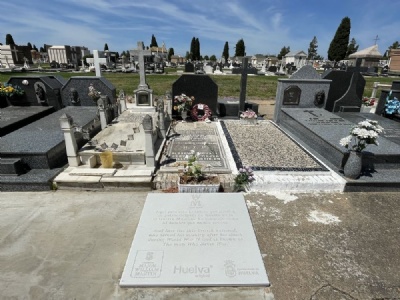
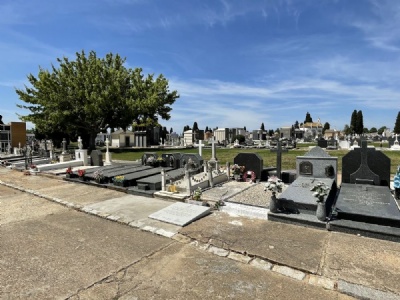
William Martin has gone down in history as The Man Who Never Was and involuntarily became the protagonist of one of the war’s most successful deception operations. In retrospect, it is always possible to discuss the controversial and moral of using a dead person for a specific purpose. But in this case it was considered that the end justifies the means. At the entrance to the cemetery there is information about William Martin and the location of his grave. After Columbus, who sailed from Huelva in 1492 in search for America, William Martin is probably the second most famous person associated with Huelva.